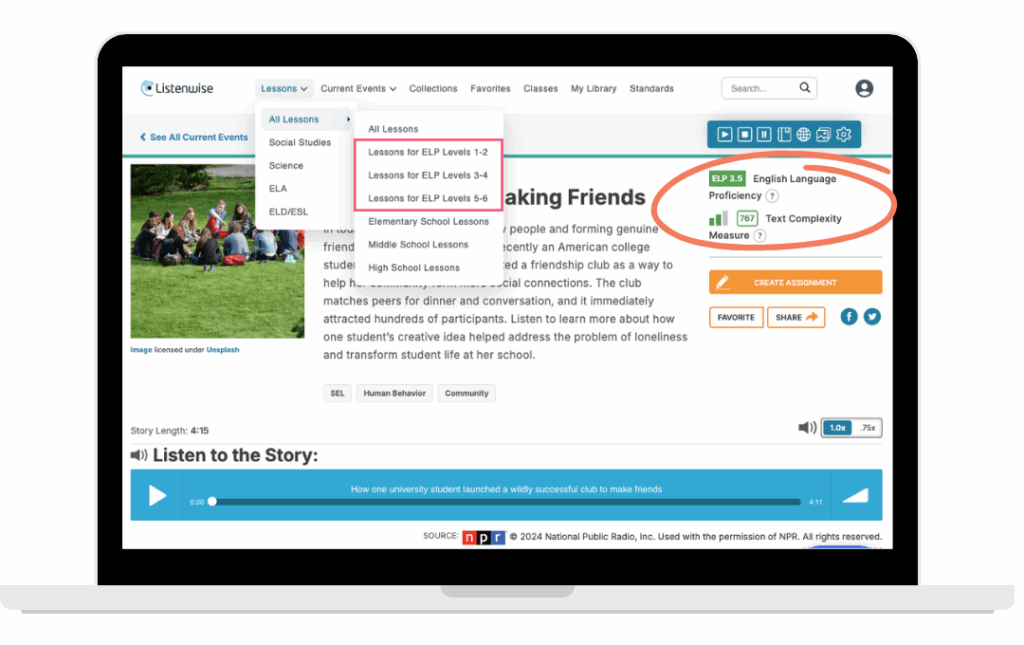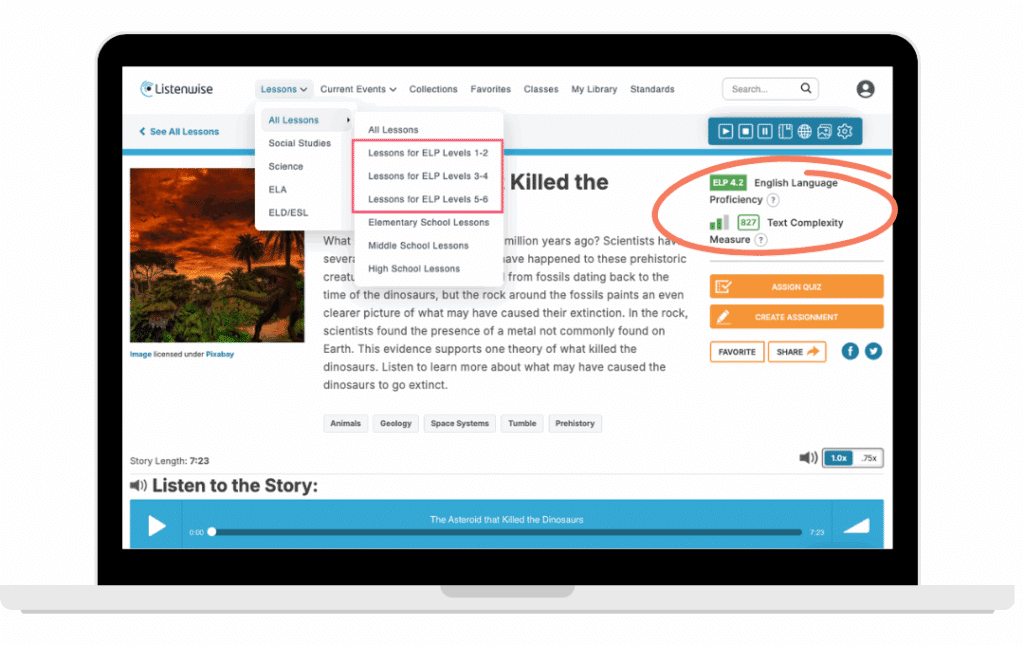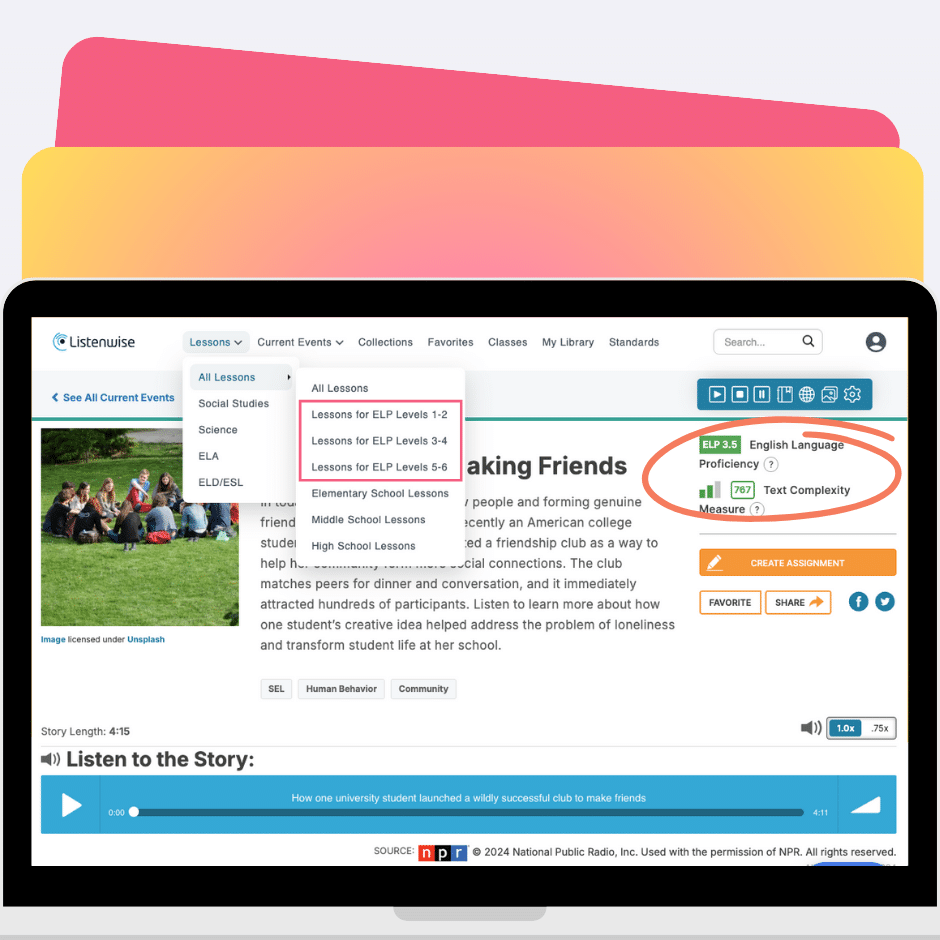Last Updated on August 21, 2025
At Listenwise, we’re always looking for ways to make it easier for educators to find the right audio stories for every student. That’s why we’ve updated how we level our content—making it more precise, helpful, and aligned with the needs of English learners and developing readers.
Read on to learn more about Listenwise ELP Levels and Text Complexity Measures and how to use them.
ELP Levels
Now, every audio story on Listenwise and video on Lingolift is tagged with an English Language Proficiency (ELP) Level from 1 to 6. These levels are based on a detailed analysis of the transcript, including vocabulary, grammar, and sentence structure, giving you a better sense of which stories will be appropriately challenging for your students at all levels of English language proficiency.

ELP levels on this 6-point scale can be mapped to other frameworks as follows:

Text Complexity Measures

We’ve also introduced Text Complexity Measures for each Listenwise story. These measures, also based on an analysis of the transcript, consider decoding ease, vocabulary familiarity, sentence complexity, and repetition patterns. They’re designed to help you match all students with content that fits their current reading level, based on research-backed grade-level recommendations.

Of course, no single number can capture all the factors that impact a student’s learning experience. Students’ age, background knowledge, and interests, as well as the on-demand supports on the platform and the scaffolding you provide, all play crucial roles in accessibility. That’s why our levels are designed to be a starting point, providing you with the insight you need to choose engaging and accessible stories with confidence.



